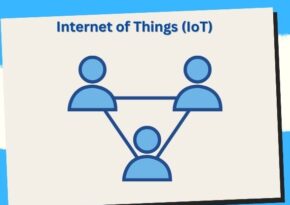
Future-Proof Your IoT: Strategies for Building Scalable Infrastructure
Learn how to future-proof your IoT projects by implementing scalable infrastructure designs that adapt to evolving needs and technologies.
Scaling Up: A Comprehensive Guide to Designing a Scalable IoT Infrastructure
In today’s interconnected world, the Internet of Things (IoT) has emerged as a transformative force, driving innovation and revolutionizing industries. However, as IoT deployments continue to grow in scale and complexity, designing a scalable infrastructure becomes paramount to ensuring reliability, performance, and sustainability. In this guide, we’ll explore the essential principles, best practices, and practical tips for designing a scalable IoT infrastructure that can accommodate growth, adapt to changing requirements, and deliver value over the long term.
Understanding the Basics: What is Scalable IoT Infrastructure? 🌐
Before diving into the intricacies of designing a scalable IoT infrastructure, let’s clarify what scalability means in the context of IoT:
- Scalability: Scalability refers to the ability of an IoT infrastructure to handle increasing volumes of devices, data, and traffic while maintaining performance, reliability, and efficiency. A scalable infrastructure can seamlessly accommodate growth and expansion without significant disruption or degradation in service.
- Components: A scalable IoT infrastructure typically consists of interconnected components, including IoT devices, gateways, communication protocols, cloud platforms, edge computing resources, and data analytics tools.
Planning Your IoT Deployment: Assessing Needs and Requirements 📝
The first step in designing a scalable IoT infrastructure is to assess your organization’s needs, goals, and requirements. Consider the following factors:
- Use Case: Define the specific use case or application for your IoT deployment, such as smart cities, industrial automation, healthcare monitoring, or agricultural management.
- Scale: Estimate the scale and scope of your IoT deployment, including the number of devices, data volume, frequency of data transmission, and expected growth rate over time.
- Performance: Determine the performance requirements for your IoT infrastructure, such as latency, throughput, reliability, and availability, to ensure optimal performance under varying conditions.
- Security: Evaluate security considerations and compliance requirements for protecting sensitive data, preventing unauthorized access, and mitigating cyber threats throughout the IoT ecosystem.
Designing a Scalable Architecture: Key Considerations and Best Practices 🏗️
Now that you have a clear understanding of your needs and requirements, let’s explore the essential principles and best practices for designing a scalable IoT architecture:
- Modularity: Adopt a modular architecture that allows for flexible expansion and integration of new components, functionalities, and services as your IoT deployment grows.
- Distributed Computing: Embrace distributed computing principles to distribute processing, storage, and communication tasks across multiple nodes and resources, reducing bottlenecks and improving scalability.
- Edge Computing: Leverage edge computing capabilities to perform data processing and analysis closer to the source of data generation, reducing latency, bandwidth usage, and reliance on centralized infrastructure.
- Interoperability: Ensure interoperability and compatibility between IoT devices, protocols, and platforms to facilitate seamless communication and data exchange across heterogeneous environments.
- Scalable Data Storage: Implement scalable data storage solutions, such as distributed databases, object storage, or time-series databases, that can accommodate growing volumes of IoT data while maintaining performance and reliability.
- Elastic Resources: Use cloud computing resources with elastic scalability, such as auto-scaling instances, serverless computing, and container orchestration platforms, to dynamically allocate and deallocate resources based on demand.
- Fault Tolerance: Design your infrastructure with built-in fault tolerance mechanisms, such as redundancy, replication, and failover, to ensure high availability and resilience against hardware failures, network outages, and other disruptions.
- Monitoring and Analytics: Implement comprehensive monitoring and analytics tools to track the performance, health, and usage patterns of your IoT infrastructure in real-time, enabling proactive optimization and capacity planning.
Choosing the Right Technologies and Platforms: Tools for Scalability 🛠️
Selecting the right technologies and platforms is crucial for building a scalable IoT infrastructure. Consider the following options:
- IoT Platforms: Choose an IoT platform that offers scalability, flexibility, and robust features for device management, data ingestion, analytics, and integration, such as AWS IoT, Microsoft Azure IoT, or Google Cloud IoT Core.
- Edge Computing Platforms: Explore edge computing platforms that provide scalable compute and storage resources at the edge of the network, such as AWS IoT Greengrass, Azure IoT Edge, or Google Cloud IoT Edge.
- Cloud Services: Leverage cloud services with scalable compute, storage, and networking capabilities, such as AWS EC2, Azure Virtual Machines, or Google Compute Engine, to support your IoT workloads.
- Containerization and Orchestration: Containerization and orchestration technologies, such as Docker and Kubernetes, enable scalable deployment and management of IoT applications across distributed environments.
Implementing Security Measures: Safeguarding Your Infrastructure 🔒
Security is paramount in IoT deployments, especially as they scale in size and complexity. Implement the following security measures to safeguard your infrastructure:
- Encryption: Use encryption protocols, such as SSL/TLS, to encrypt data in transit and at rest, protecting it from eavesdropping, interception, and tampering.
- Authentication and Authorization: Implement strong authentication and authorization mechanisms to verify the identity of IoT devices and users and control access to sensitive resources and data.
- Access Control: Enforce access control policies and least privilege principles to restrict access to critical systems, APIs, and data based on user roles, permissions, and contextual attributes.
- Device Management: Employ device management solutions to secure and monitor IoT devices throughout their lifecycle, including onboarding, provisioning, configuration, and decommissioning.
- Security Monitoring: Deploy security monitoring tools and intrusion detection systems to detect and respond to security threats, anomalies, and suspicious activities in real-time.
Scaling Your IoT Infrastructure: Tips for Success 🚀
As you scale your IoT infrastructure, keep the following tips in mind to ensure success:
- Start Small, Scale Gradually: Begin with a small-scale pilot or proof of concept to validate your design and iterate on it based on feedback and lessons learned before scaling up.
- Monitor and Measure: Continuously monitor the performance, reliability, and scalability of your IoT infrastructure using key performance indicators (KPIs) and metrics, adjusting as needed to meet changing requirements.
- Automate Operations: Embrace automation and DevOps practices to streamline deployment, provisioning, configuration, and management of IoT resources, reducing manual effort and increasing efficiency.
- Plan for Growth: Anticipate future growth and expansion of your IoT deployment by designing for scalability, flexibility, and extensibility from the outset, avoiding potential bottlenecks and constraints down the line.
- Stay Agile and Adaptive: Maintain agility and adaptability in your approach to IoT infrastructure design and management, embracing iterative development, experimentation, and continuous improvement to stay ahead of evolving requirements and challenges.
Building a Foundation for Scalability 🌟
Designing a scalable IoT infrastructure requires careful planning, thoughtful design, and continuous optimization to accommodate growth, ensure performance, and deliver value over the long term. By adopting modular architectures, leveraging distributed computing principles, and selecting the right technologies and platforms, organizations can build a solid foundation for scalability and resilience in their IoT deployments.
As you embark on your journey to design a scalable IoT infrastructure, remember to prioritize security, embrace automation, and stay agile in your approach. By following the principles, best practices, and tips outlined in this guide, you can create a scalable, reliable, and future-proof IoT infrastructure that meets the demands of today’s interconnected world and enables innovation and growth for years to come. Start building your scalable IoT infrastructure today and unlock the full potential of connected devices and data in your organization.
💡 Benefits of Designing a Scalable IoT Infrastructure
- Future-Proofing: A scalable infrastructure can accommodate growth and expansion, ensuring that your IoT ecosystem remains viable and relevant in the face of evolving technology and business needs.
- Cost Efficiency: By designing for scalability from the outset, organizations can avoid costly retrofits and upgrades down the line, optimizing resource allocation and minimizing operational expenses.
- Enhanced Performance: Scalable architectures can handle increased workloads and data volumes without sacrificing performance or reliability, ensuring consistent and responsive IoT operations.
- Flexibility and Agility: Scalable infrastructures offer flexibility to adapt to changing requirements, market conditions, and user demands, empowering organizations to seize opportunities and respond to challenges swiftly.
- Improved Resource Utilization: Scalability enables efficient resource allocation and utilization, optimizing the use of hardware, software, and network resources to maximize productivity and ROI.
- Global Reach: Scalable IoT infrastructures can seamlessly expand across geographical regions and markets, enabling organizations to reach new customers and capitalize on emerging opportunities worldwide.
- Resilience and Redundancy: Scalable architectures incorporate redundancy and failover mechanisms to ensure high availability and resilience against hardware failures, network outages, and other disruptions.
- Interoperability: Scalable infrastructures facilitate interoperability between diverse IoT devices, platforms, and protocols, enabling seamless integration and collaboration across the ecosystem.
- Data Insights and Analytics: Scalable architectures enable organizations to capture, store, and analyze vast amounts of IoT data, extracting actionable insights and driving informed decision-making.
- Competitive Advantage: By embracing scalability, organizations can gain a competitive edge in the marketplace, delivering innovative products, services, and experiences that meet the evolving needs of customers and stakeholders.
🌐 Case Studies: Real-world Examples of Scalable IoT Infrastructure Design
- Smart City Initiatives: Singapore’s Smart Nation program leverages a scalable IoT infrastructure to connect sensors, cameras, and devices across the city-state, enabling data-driven decision-making and enhancing urban services and sustainability efforts.
- Industrial IoT Platforms: Siemens’ MindSphere platform provides a scalable infrastructure for connecting and managing industrial IoT devices and applications. By leveraging cloud-based services and edge computing capabilities, MindSphere enables seamless integration and scalability for manufacturing and industrial customers worldwide.
- Healthcare IoT Solutions: Philips’ HealthSuite platform offers a scalable infrastructure for managing connected medical devices, patient data, and healthcare applications. By providing secure and scalable cloud services, HealthSuite enables healthcare providers to deliver personalized care and improve patient outcomes.
- Smart Agriculture Systems: John Deere’s Operations Center platform provides a scalable infrastructure for connecting farm equipment, sensors, and data analytics tools. By leveraging IoT technology, Operations Center enables farmers to optimize crop yields, reduce resource usage, and increase operational efficiency.
- Retail IoT Platforms: Amazon’s AWS IoT platform offers a scalable infrastructure for connecting retail devices, sensors, and applications. By providing secure and scalable cloud services, AWS IoT enables retailers to enhance customer experiences, optimize operations, and drive sales.
- Connected Vehicle Platforms: Tesla’s vehicle fleet relies on a scalable IoT infrastructure for collecting telemetry data, monitoring vehicle performance, and delivering over-the-air updates. By leveraging cloud-based services and edge computing, Tesla ensures scalability and reliability for its global fleet of electric vehicles.
- Energy Management Systems: Schneider Electric’s EcoStruxure platform provides a scalable infrastructure for connecting energy meters, sensors, and building automation systems. By leveraging IoT technology, EcoStruxure enables organizations to optimize energy usage, reduce costs, and improve sustainability.
- Smart Home Solutions: Google’s Nest platform offers a scalable infrastructure for connecting smart home devices, such as thermostats, cameras, and doorbells. By providing secure and scalable cloud services, Nest enables homeowners to enhance comfort, convenience, and security.
- Logistics and Supply Chain Solutions: IBM’s Watson IoT platform provides a scalable infrastructure for managing connected logistics and supply chain devices, such as sensors, trackers, and drones. By leveraging IoT technology, Watson IoT enables organizations to optimize logistics operations, improve supply chain visibility, and reduce costs.
- Telecommunications Networks: Verizon’s ThingSpace platform offers a scalable infrastructure for connecting IoT devices and applications across cellular, satellite, and LPWAN networks. By providing secure and scalable connectivity services, Thing Space enables organizations to deploy IoT solutions across diverse industries and use cases.
📝 Key Takeaways: Essential Strategies for Designing a Scalable IoT Infrastructure
- Define Clear Objectives: Start by defining your goals, use cases, and scalability requirements to guide the design and implementation of your IoT infrastructure.
- Select the Right Technologies: Choose scalable hardware, software, and networking technologies that can support your current and future IoT initiatives, considering factors such as performance, interoperability, and security.
- Design for Modularity and Flexibility: Adopt a modular and flexible architecture that allows for easy expansion, integration, and customization as your IoT ecosystem grows and evolves.
- Embrace Cloud Computing: Leverage cloud-based services and platforms to provide scalable storage, computing, and networking resources for your IoT applications, enabling rapid deployment and scalability.
- Implement Edge Computing: Utilize edge computing technologies to process and analyze IoT data closer to the source, reducing latency, bandwidth usage, and dependence on centralized infrastructure.
- Ensure Security and Compliance: Incorporate robust security measures and compliance frameworks to protect IoT data, devices, and communications from unauthorized access, tampering, and breaches.
- Optimize Data Management: Implement efficient data management practices, such as data aggregation, compression, and encryption, to minimize storage and bandwidth requirements and enhance scalability.
- Plan for Interoperability: Design your IoT infrastructure with interoperability in mind, ensuring compatibility between different devices, protocols, and platforms to facilitate seamless integration and collaboration.
- Monitor and Optimize Performance: Continuously monitor the performance and scalability of your IoT infrastructure, identifying bottlenecks, optimizing resource allocation, and scaling resources as needed to meet demand.
- Iterate and Innovate: Embrace a culture of continuous improvement and innovation, soliciting feedback from users, stakeholders, and industry experts to refine and enhance your scalable IoT infrastructure over time.
❓ FAQs: Addressing Common Concerns About Designing a Scalable IoT Infrastructure
- What is scalability in the context of IoT infrastructure?
Scalability refers to the ability of an IoT infrastructure to accommodate growth and expansion, including increasing numbers of devices, data volumes, and user interactions, without significant degradation in performance or reliability. - Why is scalability important for IoT infrastructure?
Scalability is important for accommodating future growth, meeting evolving business needs, optimizing resource utilization, and ensuring consistent performance and reliability in IoT ecosystems. - What are the challenges of designing a scalable IoT infrastructure?
Challenges include selecting appropriate technologies, addressing interoperability issues, ensuring security and compliance, optimizing resource utilization, and managing complexity and cost. - How do I determine the scalability requirements for my IoT infrastructure?
Scalability requirements depend on factors such as the number of devices, data volumes, user interactions, growth projections, performance targets, and budget constraints, which should be assessed and documented during the planning phase. - What are some common scalability strategies for IoT infrastructure?
Common strategies include leveraging cloud computing and edge computing, adopting modular and flexible architectures, implementing efficient data management practices, ensuring security and compliance, and monitoring and optimizing performance. - Can I upgrade my existing IoT infrastructure to make it more scalable?
Yes, you can upgrade your existing infrastructure by implementing scalability-enhancing technologies, optimizing resource allocation, and redesigning architectures to accommodate future growth and expansion. - How do I ensure compatibility and interoperability in a scalable IoT infrastructure?
Ensure compatibility and interoperability by adopting standardized protocols and interfaces, implementing open-source technologies, and collaborating with industry partners and standards organizations to define common frameworks and specifications. - What are some examples of successful scalable IoT infrastructures?
Examples include cloud-based IoT platforms, edge computing solutions, modular architectures, and interoperable ecosystems that can accommodate diverse devices, applications, and use cases while ensuring performance, reliability, and security. - How do I estimate the cost of designing and implementing a scalable IoT infrastructure?
Estimate costs based on factors such as hardware and software expenses, cloud computing and networking costs, personnel and training expenses, and ongoing maintenance and support requirements, considering both initial investments and long-term operating costs. - What are the future trends in scalable IoT infrastructure design?
Future trends include the adoption of edge computing and fog computing technologies, the development of standardized interoperability frameworks, the integration of artificial intelligence and machine learning capabilities, and the emergence of decentralized and blockchain-based IoT architectures.
🚀 Conclusion: Paving the Way to Scalable IoT Success
Designing a scalable IoT infrastructure is not just about building for today—it’s about laying the groundwork for tomorrow’s innovations and opportunities. By embracing modular architectures, cloud computing, edge computing, and interoperability, organizations can create flexible, resilient, and future-proofed ecosystems that can adapt and thrive in the face of change. So, let’s embark on this journey together, building bridges to tomorrow and unlocking the full potential of the Internet of Things for a brighter and more connected future!
Key Phrases
- Designing scalable IoT infrastructure
- Scalability in IoT network design
- Future-proofing IoT infrastructure
- Building scalable solutions for IoT
- Planning for IoT infrastructure scalability
- Flexibility in IoT infrastructure design
- Scalable architecture for IoT projects
- Adaptable IoT infrastructure strategies
- Growth-oriented IoT infrastructure design
- Scalability challenges in IoT implementation
Hashtags
- #ScalableIoT
- #IoTInfrastructure
- #FutureProofing
- #IoTNetworks
- #EfficientExpansion
- #IoTDesign
- #ScalableSolutions
- #TechInnovation
- #BusinessGrowth
- #AdaptableInfrastructure
Save/Share this story with QR CODE
Disclaimer
This article is for informational purposes only and does not constitute endorsement of any specific technologies or methodologies and financial advice or endorsement of any specific products or services.
📩 Need to get in touch?
📩 Feel free to Contact NextGenDay.com for comments, suggestions, reviews, or anything else.
We appreciate your reading. 😊Simple Ways To Say Thanks & Support Us:
1.) ❤️GIVE A TIP. Send a small donation thru Paypal😊❤️
Your DONATION will be used to fund and maintain NEXTGENDAY.com
Subscribers in the Philippines can make donations to mobile number 0917 906 3081, thru GCash.
3.) 🛒 BUY or SIGN UP to our AFFILIATE PARTNERS.
4.) 👍 Give this news article a THUMBS UP, and Leave a Comment (at Least Five Words).
AFFILIATE PARTNERS

World Class Nutritional Supplements - Buy Highest Quality Products, Purest Most Healthy Ingredients, Direct to your Door! Up to 90% OFF.
Join LiveGood Today - A company created to satisfy the world's most demanding leaders and entrepreneurs, with the best compensation plan today.



 Business Technology, Finance Technology & Information Technology
Business Technology, Finance Technology & Information Technology





